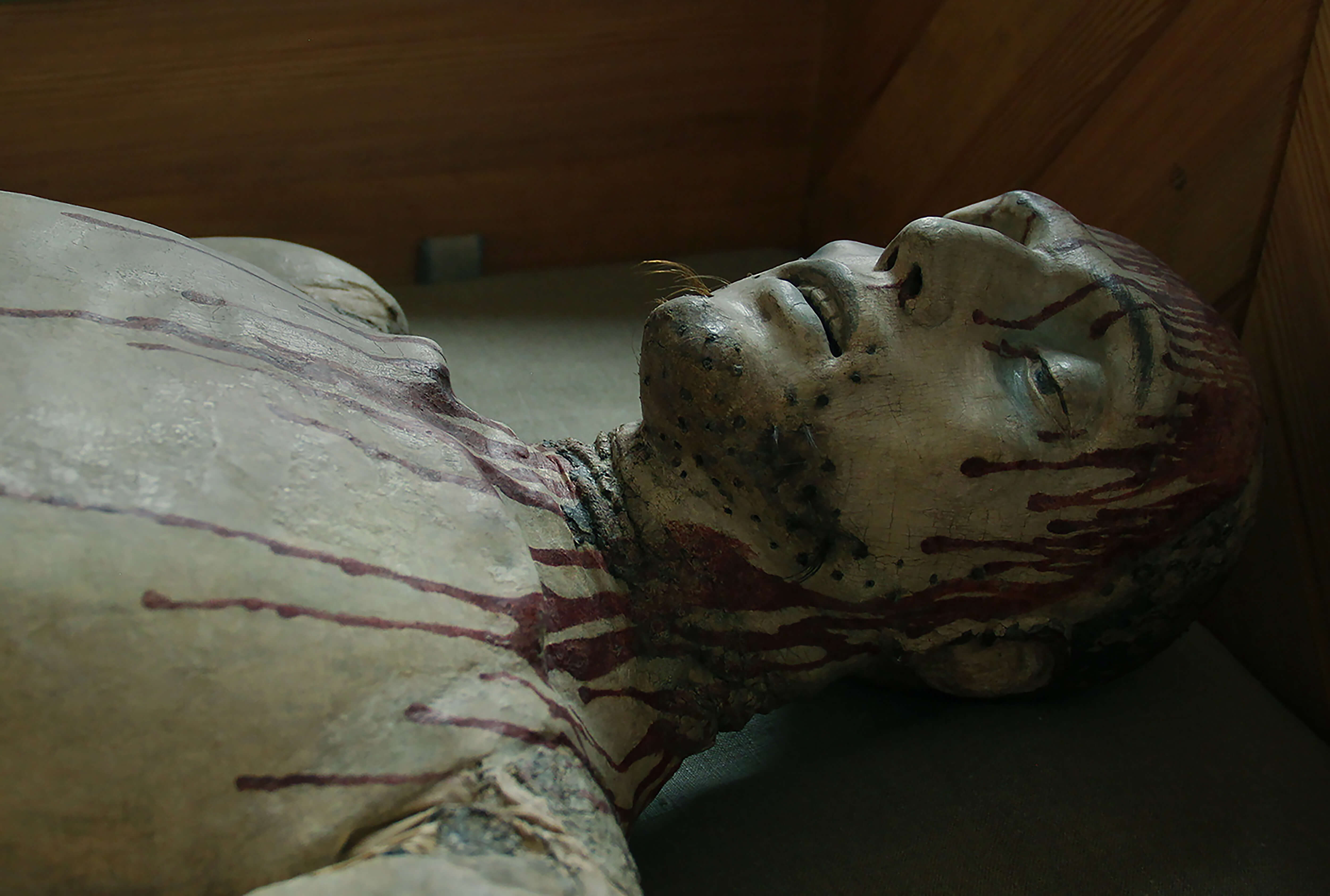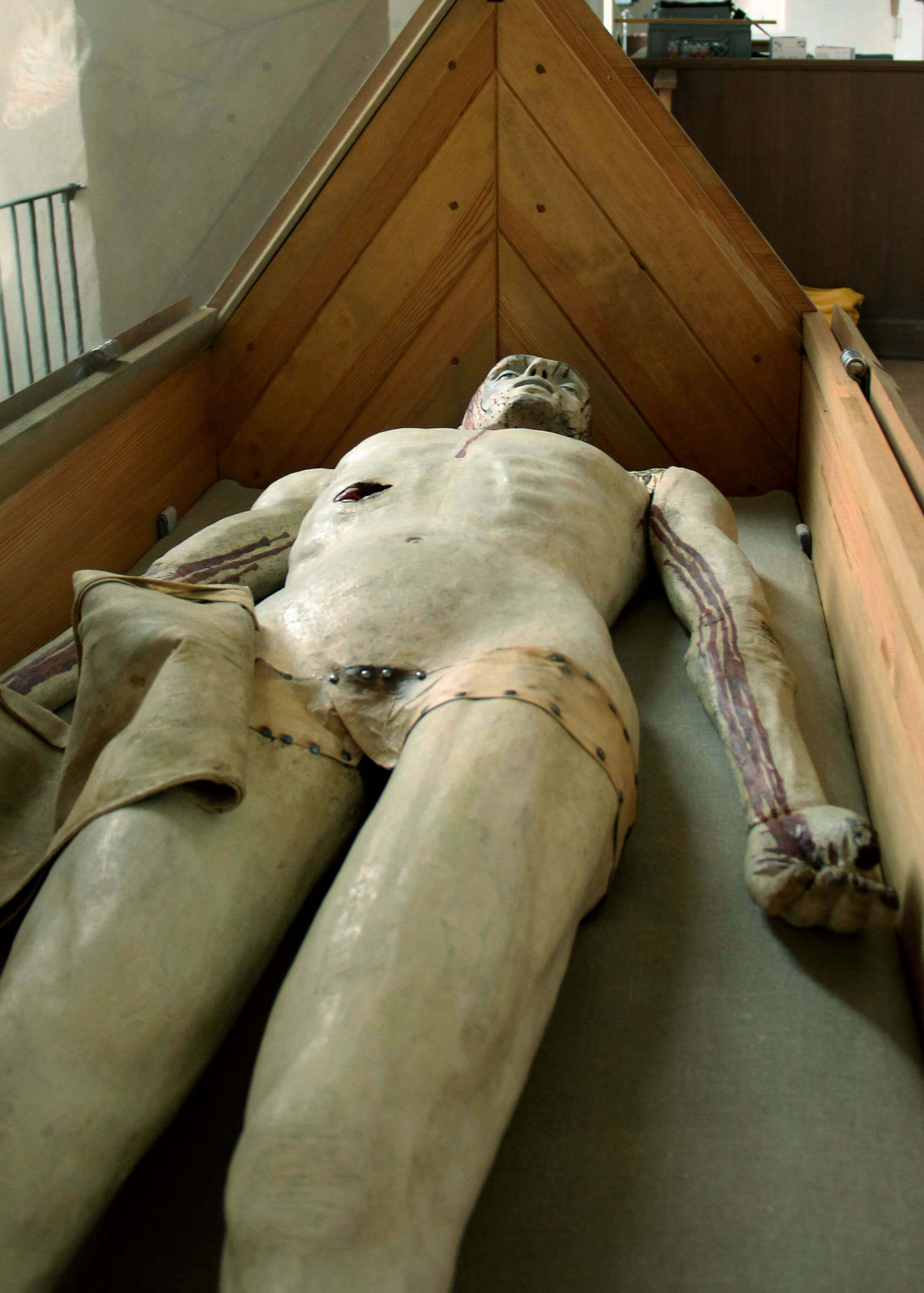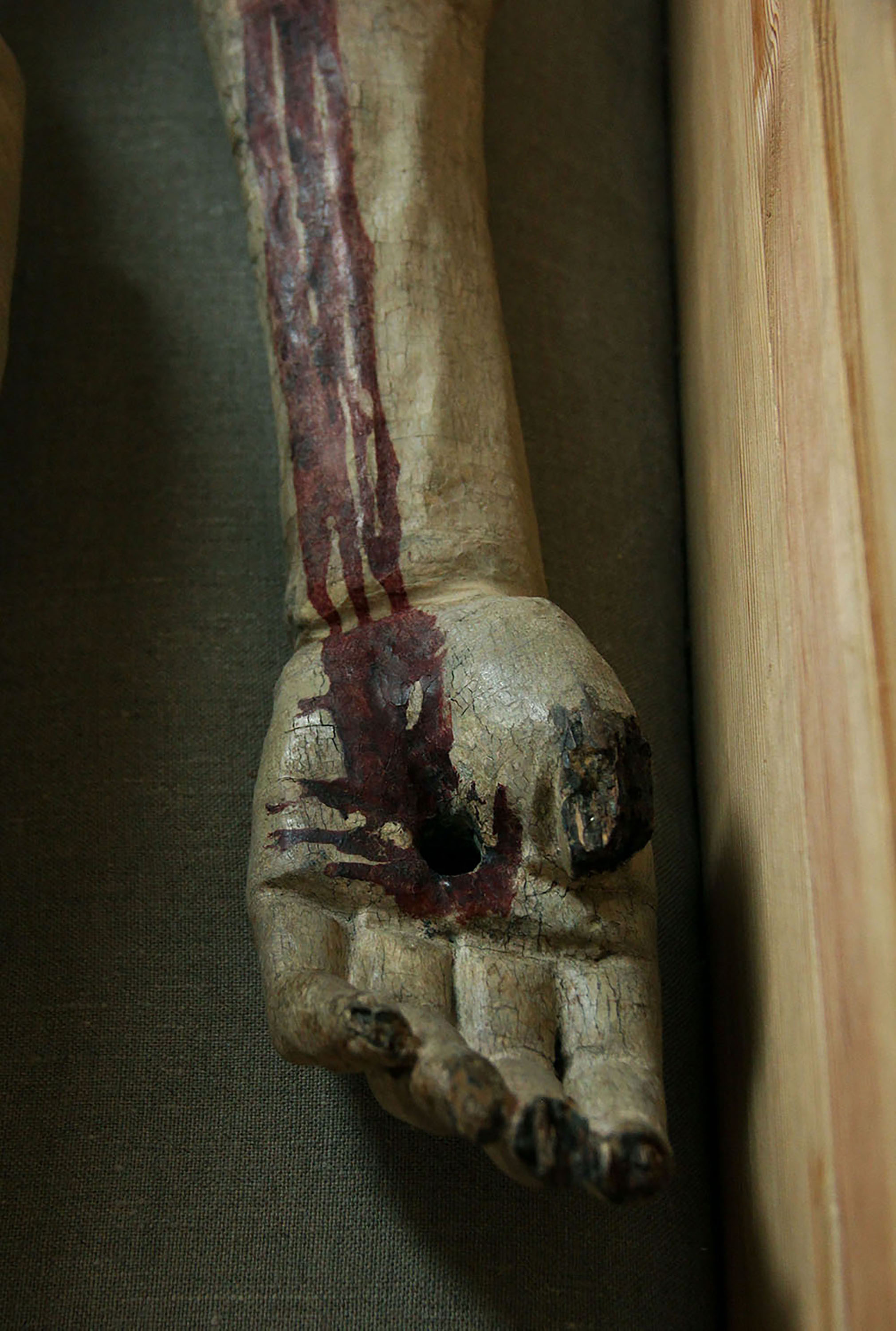
‘Mirakelmann’ is a life-size, mechanically animated figure of Christ created in the 16th century. With the waxy pale skin and the bluish shimmering shades and veins, the sculpture is singular for its very realistic and anatomically accurate presentation of a dead body, which is assumed to be achieved by modelling a corpse at the time of production. It is equipped with a function to bleed from the side wound.
Life-size realistic dolls like Mirakelmann wonder the boundary between animate and inanimate. They are a reminder of our mortality and a vessel of souls at the same time. They make us dread and also fascinate us with their irresistible magnetism.
The project explores the question of what distinguishes us from life-size figures when our souls leave our bodies.
Life-size realistic dolls like Mirakelmann wonder the boundary between animate and inanimate. They are a reminder of our mortality and a vessel of souls at the same time. They make us dread and also fascinate us with their irresistible magnetism.
The project explores the question of what distinguishes us from life-size figures when our souls leave our bodies.





Mirakelman(ドイツ語で「奇跡の人」) は ドイツ・ザクセン州の教会に保管されている等身大のキリストの像である。 制作された16 世紀当時、遺体をモデルにして作られたと考えられ蝋のような青白い肌、青く浮き上がった静脈など解剖学的に正確な造形を持つ点で特異である。体側の聖痕からは出血する仕組みを備えている。
死を迎えた後の私たちの身体は、かつて命を宿していた容れ物になり、定義の上では魂の宿っていないひとがたの物体、つまり人形に近づく。生きている間、我々と人形とを隔てている生命や意識とは何なのか?